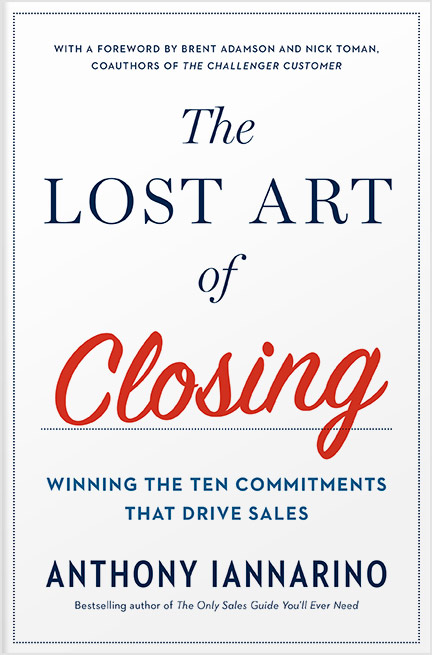Nothing that was once necessary for sales has disappeared, despite what the pundits and prognosticators suggest on the internet. Had they been right in their past predictions, there would no longer be nearly so many salespeople. Nor would those salespeople still use telephones. Instead, selling continues to evolve, transcending and including what came before, and increasingly creating more value along the way. Here is how you need to be enabled for winning sales.
A Theory About Why Your Dream Client Should Change
You need to know why your prospective client should change. Understanding why they should change before they recognize the need on their own is more valuable than waiting until your potential client is unhappy with their results and begins searching for answers. The difference between these two approaches helps define the difference between selling at Level 3 and selling at Level 4. At Level 3, you are reactive, helping your client solve a recognized problem. When explaining a gap your prospect hasn’t yet identified or framed effectively, you are proactive and approaching them from Level 4.Win customers away from your competition. Check out Eat Their Lunch
If you don’t have an understanding as to why your dream client should change before they are dissatisfied with their current results or partner, selling is more difficult. When you work in a business that requires competitive displacements to grow (i.e., winning customers away from your competition), it’s very difficult to eject your competitor from their seat at the table without a theory about why your prospect should change now.
An Understanding of How to Create Value
The world of sales and marketing has long recognized and spoken about “value creation.” Much of what is written or spoken about value creation is about the company or product or service’s value proposition. A stronger value proposition is better than a weaker one, and while it is helpful, it isn’t often enough by itself to win in B2B sales. What is more important is your ability to create value for the contacts you are selling to throughout the sales conversations.
Creating value as a salesperson means providing ideas and insights that help provide context and direction about why your dream client should change. It means helping them understand what and how they need to do something different in the future. Value creation also means providing the advice on what to do and how to do, the very behavior that makes you consultative (which is something more than not being a pushy, smarmy, and self-oriented).
If the experience of working with you through the sales process isn’t valuable for your dream client in comparison to others, your general value proposition isn’t likely to carry the day for you.
Knowledge of Likely Questions
Every once in a while, you get a question so novel it surprises you. If you have worked in the same space for a long time, these questions should be as frequent, as say, a total lunar eclipse.
Your prospective clients have questions at every phase of the sales conversation. In early discussions, they want to understand why they need to change or why they struggle to produce better results. As they move forward, they have questions about what their choices of action might be and how to make the best choices. At some point, your contacts will have questions about their ability to produce those results with your help, meaning questions about whether or not you can help them execute.
Because there are questions at every stage of the sales conversation, there is no reason not to have effective language choices to answer and address them. If you are continually asked the same question, you should never be surprised, and you should never have to fumble around for an answer.
Strategies for Effectively Eliciting Meaningful Information
Rackham’s book, SPIN Selling, contained a framework for asking questions of increasing value. His view that “implication questions” were a necessary component to compel change (my words, not his) was transformational for some sales organizations. His work, like most other’s, is “more honored in the breach than the observance.” Most salespeople still ask questions that attempt to get their prospective client to share their dissatisfaction.
A salesperson recently asked me, “If you could change one thing about your current solution, what would that be?” A variation of “What’s keeping you up at night,” and a question so direct as to leave no doubt that the salesperson is not equipped to create value outside of explaining why their solution is better.
There are better and more powerful ways to elicit meaningful information. You can, for example, ask about your dream clients strategic outcomes as a way to expose a gap in their results or their overall strategy. If you want to ask more powerful questions, you can also ask questions that cause your contacts to discover something about themselves and their company, namely, that they need to change.
Your performance is improved when you have strategies for effectively eliciting meaningful information. The word “meaningful” doesn’t mean useful only to you; it needs to be meaningful to your dream client. You will know you hit the mark when your contacts say, “That’s a great question.”
Depth of Experience of How to Change
Too many salespeople rely to their detriment on subject matter experts. Some have become so dependent on a SME that they don’t even want to have a discovery meeting without having one with them. There is nothing wrong with having a subject matter expert as part of the sales conversation. There is, however, something wrong with not knowing enough to explain why you recommend a particular course of action, why you do things one way instead of another, and how your prospective client should change.
One way to describe the amount of knowledge is to think of yourself as a 52% SME, which is to say you can get through the first and second level conversation about your solution without needing a SME. The 52% SME concept also speaks to the need to know as much or more than the business owner, since you are advising them (something that in no way suggests you shouldn’t also allowing them to educate you, as well). It doesn’t mean you have to have more technical knowledge than your dream client’s technical expert, their SME.
You need to know enough to be able to recommend how to change, the trade-offs between certain choices, and why one way is better than another in the context of your client’s strategic outcomes.
Ability to Control the Process
Neither the sales process or the buyer’s journey are linear. You need to know how to get your client from where you found them to where they’re going. Sure, they are going to have ideas about how to get there, what works for them, and what doesn’t. However, you need to know the road better than they do to give them competent counsel.
One of the reasons your clients struggle to make decisions is because they don’t have the reliable guidance they need to know how to make them confidently. Controlling the process requires that you sell your dream client the value of the different commitments they need to make, as well as all the conversations and decisions they need to make.No more pushy sales tactics. The Lost Art of Closing shows you how to proactively lead your customer and close your sales.  The more help you provide, the higher the likelihood of your winning—and your dream client getting the result they want.
The more help you provide, the higher the likelihood of your winning—and your dream client getting the result they want.
When you believe you sell your company and your solution, you miss selling the meeting and selling the process, things that mostly turn out to be more important than either your company or your solution.
An Evolutionary Change
The outcomes you need to create have changed in meaningful ways. They are complicated, and they require more of you as a salesperson. Because these are not the common topics taught, training, or developed, you may have to start enabling yourself.








.jpg?width=768&height=994&name=salescall-planner-ebook-v3-1-cover%20(1).jpg)


